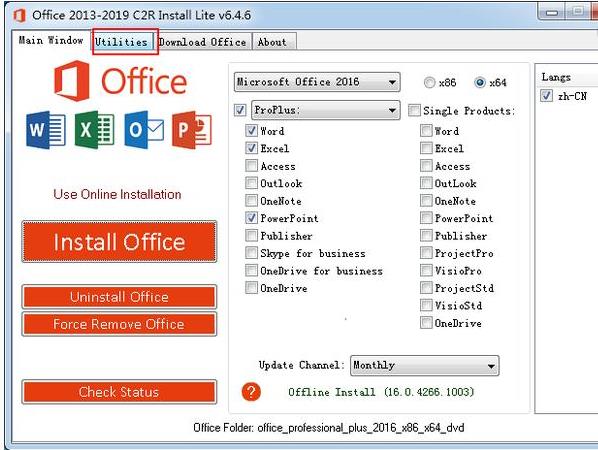Office2016专业版更新时提示无法流式传输office错误代码30183-28(404)
Posted
tags:
篇首语:本文由小常识网(cha138.com)小编为大家整理,主要介绍了Office2016专业版更新时提示无法流式传输office错误代码30183-28(404)相关的知识,希望对你有一定的参考价值。
参考技术AOffice2016专业版更新时出错解决办法:把电脑中office软件全部卸载干净重新安装。其次退出加入用户体验计划即可。如果卸载不干净建议重新做系统。
Office 2016是微软的一个庞大的办公软件集合,其中包括了Word、Excel、PowerPoint、 OneNote、Outlook、Skype、Project、Visio以及Publisher等组件和服务。

扩展资料
windows应用程序出错表象 Windows操作系统有时会出现错误信息,例如写内存错误系统会提示:「“0X????????”指令引用的“0x00000000”内存,该内存不能为“read”或“written”」,然后应用程序自行关闭,程序不能运行。
应用程序
木马病毒
木马或病毒这类程序为了控制系统往往不负责任地修改系统,从而导致操作系统异常。平常应加强信息安全意识,对来源不明的可执行程序绝不好奇。
操作系统
有时候操作系统本身也会有BUG,要注意安装官方发行的升级程序。更新操作系统,让操作系统的安装程序重新拷贝正确版本的系统档案、修正系统参数。
硬件本身
硬件本身质量问题及不兼容的情况,同时还要注意散热问题,超频等特殊情况。
参考资料来源:百度百科-应用程序错误
在更新时显示从 Flask 视图流式传输的数据
【中文标题】在更新时显示从 Flask 视图流式传输的数据【英文标题】:Display data streamed from a Flask view as it updates 【发布时间】:2015-11-04 01:31:01 【问题描述】:我有一个实时生成数据并流式传输的视图。我不知道如何将这些数据发送到我可以在我的 HTML 模板中使用的变量。我当前的解决方案只是在数据到达时将数据输出到空白页面,这很有效,但我想将其包含在带有格式的更大页面中。如何在数据流式传输到页面时更新、格式化和显示数据?
import flask
import time, math
app = flask.Flask(__name__)
@app.route('/')
def index():
def inner():
# simulate a long process to watch
for i in range(500):
j = math.sqrt(i)
time.sleep(1)
# this value should be inserted into an HTML template
yield str(i) + '<br/>\n'
return flask.Response(inner(), mimetype='text/html')
app.run(debug=True)
【问题讨论】:
您是否希望将连续的输出值流打印到屏幕上? 是的。上面的 for 循环模拟了一个更长的过程。基本上我想要在它运行时提供类似打印的反馈。 【参考方案1】:您可以在响应中流式传输数据,但不能按照您描述的方式动态更新模板。模板在服务器端渲染一次,然后发送到客户端。
一种解决方案是使用 JavaScript 读取流式响应并在客户端输出数据。使用XMLHttpRequest 向将流式传输数据的端点发出请求。然后定期从流中读取,直到完成为止。
这会带来复杂性,但允许直接更新页面并完全控制输出的外观。以下示例通过显示当前值和所有值的日志来演示这一点。
这个例子假设了一个非常简单的消息格式:单行数据,后跟一个换行符。只要有一种方法可以识别每条消息,这可以根据需要变得复杂。例如,每个循环都可以返回客户端解码的 JSON 对象。
from math import sqrt
from time import sleep
from flask import Flask, render_template
app = Flask(__name__)
@app.route("/")
def index():
return render_template("index.html")
@app.route("/stream")
def stream():
def generate():
for i in range(500):
yield "\n".format(sqrt(i))
sleep(1)
return app.response_class(generate(), mimetype="text/plain")
<p>This is the latest output: <span id="latest"></span></p>
<p>This is all the output:</p>
<ul id="output"></ul>
<script>
var latest = document.getElementById('latest');
var output = document.getElementById('output');
var xhr = new XMLHttpRequest();
xhr.open('GET', ' url_for('stream') ');
xhr.send();
var position = 0;
function handleNewData()
// the response text include the entire response so far
// split the messages, then take the messages that haven't been handled yet
// position tracks how many messages have been handled
// messages end with a newline, so split will always show one extra empty message at the end
var messages = xhr.responseText.split('\n');
messages.slice(position, -1).forEach(function(value)
latest.textContent = value; // update the latest value in place
// build and append a new item to a list to log all output
var item = document.createElement('li');
item.textContent = value;
output.appendChild(item);
);
position = messages.length - 1;
var timer;
timer = setInterval(function()
// check the response for new data
handleNewData();
// stop checking once the response has ended
if (xhr.readyState == XMLHttpRequest.DONE)
clearInterval(timer);
latest.textContent = 'Done';
, 1000);
</script>
<iframe> 可用于显示流式 HTML 输出,但它有一些缺点。框架是一个单独的文档,增加了资源的使用。由于它只显示流数据,因此像页面的其余部分一样设置样式可能并不容易。它只能附加数据,因此长输出将呈现在可见滚动区域下方。它不能修改页面的其他部分来响应每个事件。
index.html 使用指向stream 端点的框架呈现页面。框架的默认尺寸相当小,因此您可能需要进一步设置它的样式。使用知道转义变量的render_template_string 来呈现每个项目的HTML(或使用render_template 处理更复杂的模板文件)。可以产生一个初始行以首先在框架中加载 CSS。
from flask import render_template_string, stream_with_context
@app.route("/stream")
def stream():
@stream_with_context
def generate():
yield render_template_string('<link rel=stylesheet href=" url_for("static", filename="stream.css") ">')
for i in range(500):
yield render_template_string("<p> i : s </p>\n", i=i, s=sqrt(i))
sleep(1)
return app.response_class(generate())
<p>This is all the output:</p>
<iframe src=" url_for("stream") "></iframe>
【讨论】:
【参考方案2】:晚了 5 年,但这实际上可以按照您最初尝试的方式完成,javascript 是完全没有必要的(编辑:接受答案的作者在我写完这篇文章后添加了 iframe 部分)。您只需将输出嵌入为<iframe>:
from flask import Flask, render_template, Response
import time, math
app = Flask(__name__)
@app.route('/content') # render the content a url differnt from index
def content():
def inner():
# simulate a long process to watch
for i in range(500):
j = math.sqrt(i)
time.sleep(1)
# this value should be inserted into an HTML template
yield str(i) + '<br/>\n'
return Response(inner(), mimetype='text/html')
@app.route('/')
def index():
return render_template('index.html.jinja') # render a template at the index. The content will be embedded in this template
app.run(debug=True)
然后'index.html.jinja'文件将包含一个<iframe>,其内容url作为src,类似于:
<!doctype html>
<head>
<title>Title</title>
</head>
<body>
<div>
<iframe frameborder="0" noresize="noresize"
style='background: transparent; width: 100%; height:100%;' src=" url_for('content')"></iframe>
</div>
</body>
在渲染用户提供的数据时,应使用render_template_string() 来渲染内容以避免注入攻击。但是,我将其排除在示例之外,因为它增加了额外的复杂性,超出了问题的范围,与 OP 无关,因为他不是流式传输用户提供的数据,并且与广大大多数人看到这篇文章,因为流式传输用户提供的数据是一个非常边缘的案例,很少有人会这样做。
【讨论】:
以上是关于Office2016专业版更新时提示无法流式传输office错误代码30183-28(404)的主要内容,如果未能解决你的问题,请参考以下文章